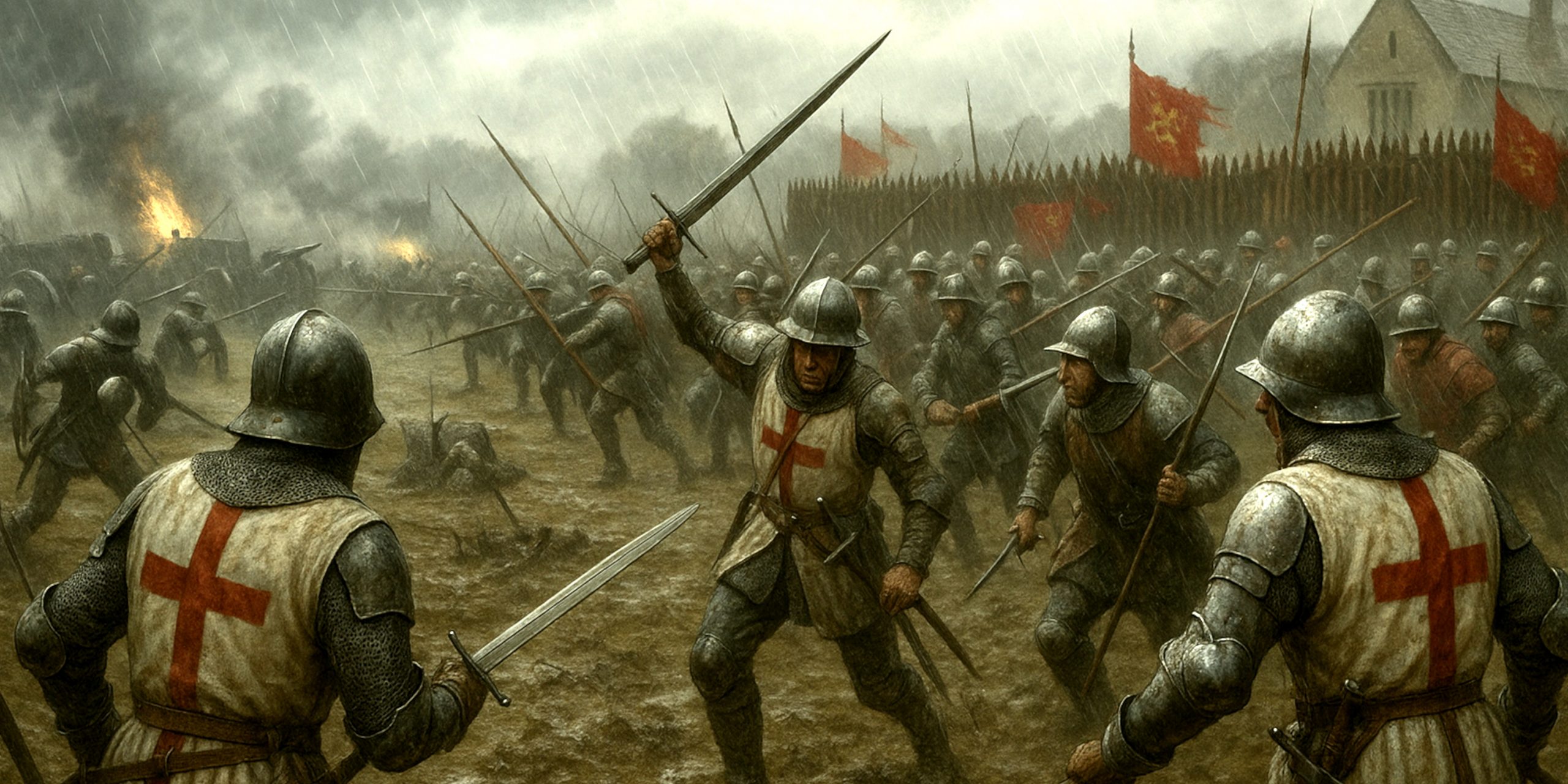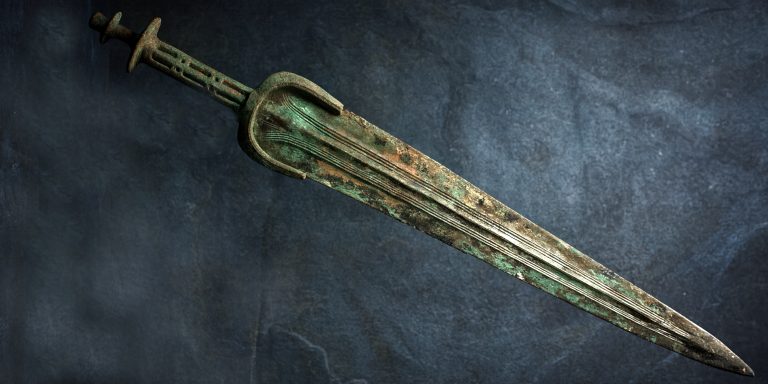
A turning point in the Wars of the Roses, and one of those clashes that feels strangely brisk when you read the sources. It is a battle shaped by misplaced loyalty, rain that ruined gunpowder, and a betrayal so neat that even the chroniclers sound faintly impressed. I have always found Northampton a curious fight. It has all the ingredients for a storming set piece, yet the whole thing collapsed in little more than half an hour.
Below is a structured and web friendly account that keeps the tone grounded, with the occasional historian’s aside when the evidence invites a raised eyebrow.
Northampton sits near the midpoint of the first phase of the Wars of the Roses. The Yorkist leaders, Richard Neville Earl of Warwick and Edward Earl of March, returned from Calais seeking to force a political settlement on Henry VI. The Lancastrian court refused to negotiate. The result was a battle in the sodden fields outside Delapré Abbey.
The Yorkists won with startling speed. This was partly due to well organised infantry, partly due to luck with the weather, and partly because part of the Lancastrian line opened its own gates.
Background
Henry VI had been restored to authority after the Yorkist defeat at Ludford Bridge. Warwick’s naval victory off Sandwich gave the Yorkists a foothold to land in Kent. From there, they marched through loyal towns and gathered support. The aim was public. They wanted access to Henry VI and the removal of his advisers. Negotiation was attempted at Northampton but refused.
The Lancastrians constructed a fortified camp. On paper this looked sensible. In practice, it reminded me of every medieval commander who thought earthworks and wet ground would solve all their problems, only to realise that good infantry and treachery can cut through mud quicker than rainwater.
Forces
Summary Table
| Side | Estimated Strength | Main Leaders | Notes |
|---|---|---|---|
| Yorkist | c. 10,000 to 15,000 | Earl of Warwick, Edward Earl of March, Lord Fauconberg | Veterans from Calais with strong discipline |
| Lancastrian | c. 10,000 | Duke of Buckingham, Earl of Shrewsbury, Lord Beaumont, Lord Egremont | Defending fortified position beside Delapré Abbey |
Leaders and Troop Composition
Yorkist Command Structure
- Richard Neville, Earl of Warwick, commander on the ground and using hardened Calais men at the front.
- Edward Earl of March, later Edward IV, leading one of the divisions and strengthening morale simply by existing. Chroniclers emphasise his presence.
- William Neville, Lord Fauconberg, coordinating the archers and infantry advance.
Yorkist Troops
- Veterans of Calais garrison, drilled and accustomed to disciplined manoeuvre.
- Longbowmen who opened the engagement.
- Billmen forming the bulk of the assault.
- Small contingents of mounted men, largely used for movement rather than shock.
Lancastrian Command Structure
- Humphrey Stafford, Duke of Buckingham, in overall charge.
- John Talbot, Earl of Shrewsbury, representing one of the most respected military families.
- Lord Beaumont and Lord Egremont holding sectors of the defences.
Lancastrian Troops
- Mixed levies from the Midlands.
- Household men of Buckingham and Shrewsbury.
- Gunners equipped with early cannon, sadly rendered ineffective by the weather.
Arms and Armour
The battle shows a typical late fifteenth century English loadout, with a respectable mix of traditional weapons and the early push towards handguns and artillery.
Yorkist Equipment
- Swords
- Arming swords of Oakeshott Types XV and XVIII, suited to thrusting through gaps in plate.
- Some falchions among lighter infantry, particularly Calais veterans.
- Polearms
- Bills forming the backbone, reliable in close quarters.
- Armour
- Plate harness for men at arms, sallets with bevor plates, brigandines for lighter troops.
- Ranged Weapons
- English longbows with bodkin points for anti armour work.
Lancastrian Equipment
- Swords
- Arming swords similar to Yorkists, with a few heavier Type XVIa blades among noble household troops.
- Polearms
- Bills and spears along the ramparts.
- Armour
- Good quality plate for nobles, mixed quality for their retainers.
- Gunpowder Weapons
- Small artillery pieces and handguns. Contemporary accounts state that heavy rain rendered them useless, which must have been demoralising. One gets the sense that Warwick was quietly pleased with the weather.
Archaeology
Archaeological evidence from Northampton is limited. The battlefield lies partly on monastic ground and later developed land, so large scale finds are rare.
Key archaeological notes:
- Occasional fragments of armour and buckles have been recorded in the wider area, but none definitively tied to the battle.
- Soil studies show the ground retains heavy water easily, matching the chroniclers who describe the day as drenched.
- Metal detecting surveys under supervision have suggested concentrations of medieval artefacts near the traditionally accepted lines, but nothing decisive enough to redraw the map.
It is a battlefield where the documentary record outperforms the archaeology, a historian’s mixed blessing. Plenty to analyse, not enough to point at.
Contemporary Quotes
Contemporary observers give glimpses of the speed and surprise.
- The Great Chronicle of London notes, “The king’s ordnance availed not, for the day was full wet and the powder foul.”
- One Yorkist account remarks that when Lord Grey switched sides, “the trenches were as open as a lane,” which is a polite fifteenth century way of saying the whole defensive plan collapsed in seconds.
- A Lancastrian letter written shortly after claims that “all was lost in one moment,” which feels honest, if painful.
Battle Timeline
Early Morning
Yorkists approach the Lancastrian position and send messengers requesting safe access to the king. Refused.
Late Morning
Yorkists advance under arrow cover. Lancastrian artillery fails to fire due to rain.
Opening Assault
Warwick orders infantry forward. The attack meets strong resistance until Lord Grey of Ruthin orders his men to open their barricades to the Yorkists. This is the moment the battle effectively ends.
Breakthrough
Yorkist troops pour into the camp. Buckingham, Shrewsbury and Beaumont are killed in the defence around the king’s tent.
Capture of Henry VI
Henry VI is taken with minimal harm and treated with courtesy.
Aftermath
Yorkists escort the king back to London. Political negotiations resume under Yorkist control.
Legacy
Northampton tilted the conflict towards the Yorkist cause. It led directly to the attempt to name Richard Duke of York as heir to the throne, which in turn set the stage for the heavy fighting that followed.
The battle is also remembered for its speed. Modern historians sometimes compare it to a castle with the door left ajar. Grand intentions, undone by one nobleman with a quiet grudge.
Watch the documentary:



